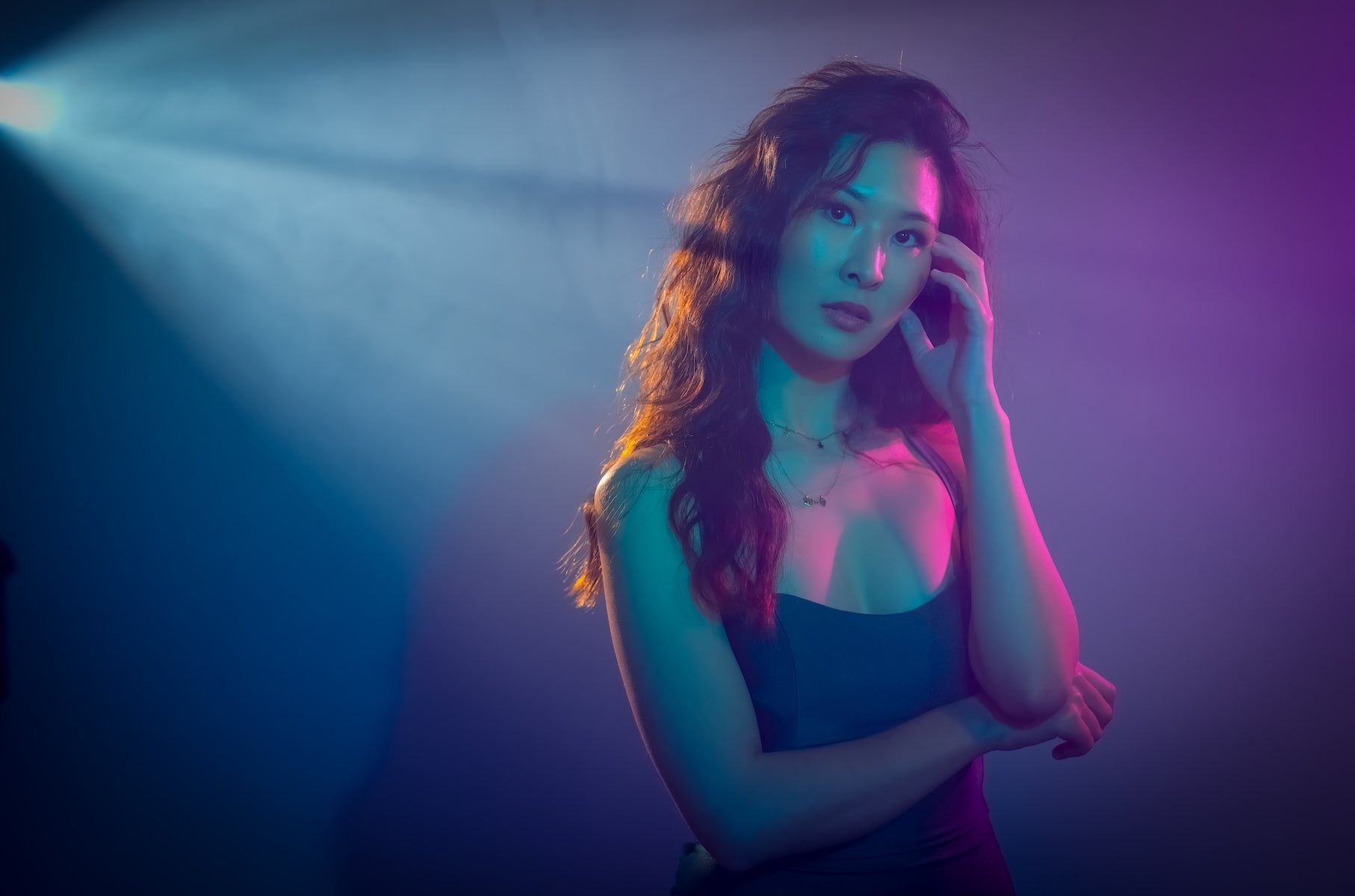The Sony Alpha 9 III’s global shutter image sensor exposes and reads all pixels simultaneously, unlike a rolling shutter sensor that records images sequentially from the top row of pixels to the bottom. Sony Brand Ambassador and portrait pro Scott Robert Lim calls the camera a technological breakthrough that will change the world of lighting more than many photographers realize – but you might need some more explanation to fully grasp its capabilities. Here we go into a deep dive with Lim to learn more about how the Sony Alpha 9 III can change the world in regards to lighting for photographers, and see how he’s already used the camera for several stunning portrait sessions.

Photo by Scott Robert Lim. Sony Alpha 9 III. Sony 50mm f/1.2 G Master. 1/16000-sec., f/1.2, ISO 250
The Global Shutter Difference
When using a typical camera without global shutter and with a native flash, most cameras will have to shoot at or below 1/250-sec. “Your flash has to operate at that shutter speed because the shutter has to stay completely open long enough to sync with the flash, because the flash is very momentary,” Lim explains. “The duration of light in a flash when it's at lower levels could be at 1/50000-sec. – it's very minimal. So the camera's shutter has to open the shutter up long enough to sync with it.”
He continues, “So the way a camera works on higher shutter speeds, is it basically uses two shutters – one shutter as it's revealing the sensor and another shutter following it – allowing a slit of light to light up the sensor, but it doesn't light it up all at the same time.”
An example of this is if you’re photographing someone swinging a golf club. On a typical camera, you’re going to see the club look bent in the photograph. Why is that? It’s the result of each row of the image being captured at a slightly later moment in time. Sure, it’s capturing it quickly, but without that global shutter you can’t capture the entire image all at the same time. Even with the slit of light going up the sensor, it’s not getting it all at once.
“Now, what global shutter does is gets away from that old technology and allows you to capture the image on the entire sensor all at the same time, even up to 1/80,000-sec., which is insane,” says Lim.
Where does lighting come into play?
You might be wondering where lighting, specifically flash, comes into play here. Lim explains that since the sensor is being exposed all at once, you can fire a momentary flash and you will catch all of the light across the entire sensor. Whereas before using High-Speed Sync, it would fire that flash several times very quickly. As that slit of light is going up the sensor, it's firing each time to cover the sensor with light. When you have to force the flash to fire multiple times within a fraction of a second, it can only produce so much power. “Then you’re not going to get as much power out of it because you have to fire it multiple times," Lim explains. "And, if you were to shoot it natively without High-Speed Sync, you won’t be able to overcome super bright light outdoors.”

Photo by Scott Robert Lim. Sony Alpha 9 III. Sony 50mm f/1.2 G Master. 1/800-sec., f/1.2, ISO 800
Lim further explains that with your typical camera, when shooting outdoors with a bright sky with a native flash sync, you would have to be at f/32 or f/16 and ISO 100 to darken the sky. This is because you’re limited by your shutter speed that has to be slower than 1/250-sec. Now with the Sony Alpha 9 III, you no longer need High Speed Sync. You are able to go all the way to 1/80,000-sec., and still be in your flash sync. He was able to test it out for some outdoor portraits pairing the camera with his Sony 50mm f/1.2 G Master.
“This means I could darken the sky with my shutter, while still leaving my f-stop wide open. We’re talking about being able to use f/1.2 or f/1.8 instead of f/16. I can get any exposure I want and darken that sky in the photo. With my shutter speed I can lower the exposure, and then I could hit my subject with flash, illuminating the subject and keeping my aperture open to control depth of field. I often use the Sony 50mm f/1.2 G Master lens for portraits and I used it in these outdoor images – I’ve never been able to get an image like this in a single shot in camera!”

"I shot this with a super small, constant light/flash at the same time, and it's able to sync with the camera. It was basically at 1/64th power of a small flash to do that, which I just wanted to see if it could be done. And I was totally blown away that, yes, it can be done." Photo by Scott Robert Lim. Sony Alpha 9 III. Sony 50mm f/1.2 G Master. 1/26000-sec., f/1.8, ISO 250
He continues, “Before I was forced to shoot at f/16 to control the brighness of the sky or I'd use High Speed Sync, which lowers my flash power, but now I can just go with a flash at f/1.8 and with my shutter up to 1/80,000-sec. If you want to make bright daylight look like nighttime, you could do it and it would only require 1/64 power of the flash instead of full power. With global shutter and unlimited flash speed sync you can control background illumination with the shutter speed instead of the aperture, and you can control depth of field with the aperture and subject illumination with a combination of the aperture and flash output. So the global shutter allows you to shoot at lower f/stops and higher shutter speeds to control the light and depth of field.”

Photo by Scott Robert Lim. Sony Alpha 9 III. Sony 50mm f/1.2 G Master. 1/26000-sec., f/1.8, ISO 250
Lim also had the chance to pair the Sony Alpha 9 III with four Sony HVL-F60RM2 flashes for an indoor portrait shoot. “I was setting my flash above normal sync speed, and then I was able to just hold the shutter down, say at 10 frames per second, and it would just sync with it. I was almost making a little movie with the JPEGs. We had a spray can of smoke, which can be hard to get a good shot with because the pattern of the smoke is so momentary, but at 10 frames per second to capture that perfect photo where the smoke is covering the background just right.”

Photo by Scott Robert Lim. Sony Alpha 9 III. Sony 85mm f/1.4 G Master. 1/5000-sec., f/1.4, ISO 800
He continues, “Because of the global shutter, you're able to fire at a rapid rate. In the old days, sometimes I would fire a flash and I would get this line across the frame. That line was because the shutter wasn't open across the entire sensor. I get none of that with the Sony Alpha 9 III."
“The Alpha 9 III is going to change the entire world.”

Photo by Scott Robert Lim. Sony Alpha 9 III. Sony 85mm f/1.4 G Master. 1/5000-sec., f/1.4, ISO 800
See more of Scott Robert Lim’s work on Instagram @scottrobertlim.



























